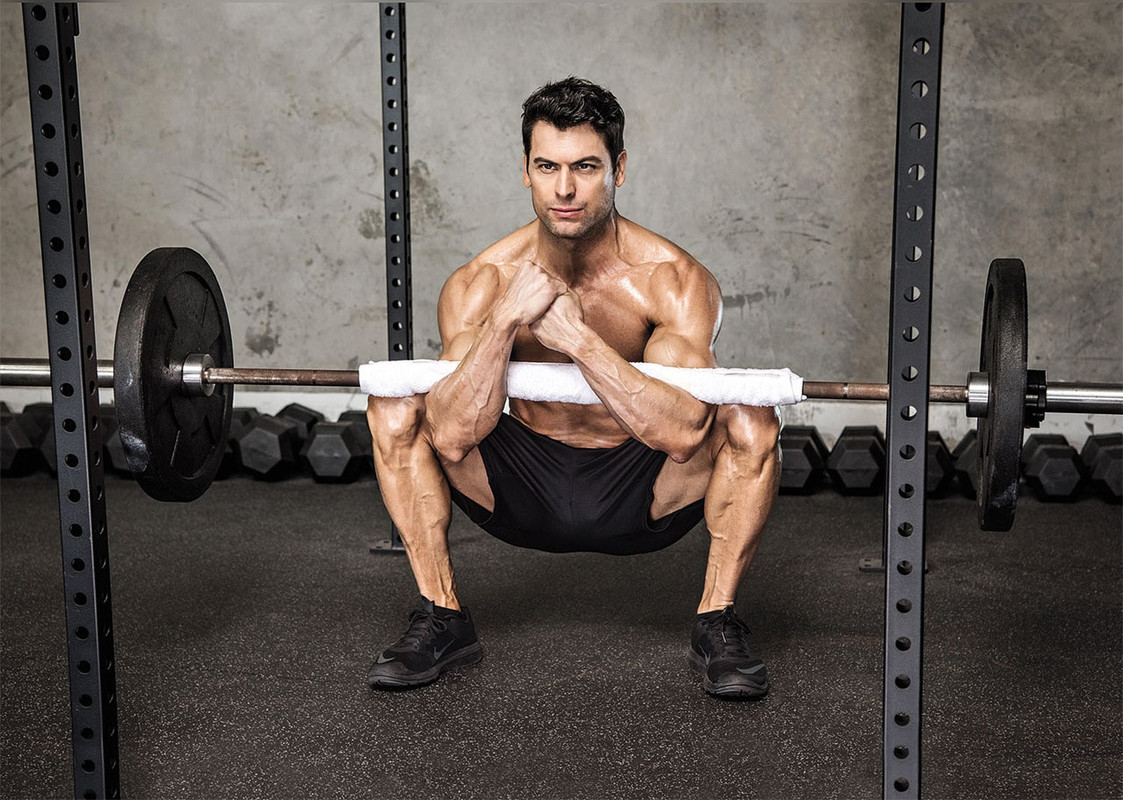
Have you tried them all?
Squatting is a fundamental movement pattern, yet when we think of squats, we typically see a barbell across the back. There are many more choices, many of which are better suited to various lifters with various levels of expertise or objectives.
These six squat variations are essential for any lifter to master.
The Goblet Squat
One of the best exercises for beginners or lifters who need to review their squat technique is the goblet squat. When done with higher repetitions or a heavy load, they're also a monster for seasoned lifters.
Goblet squats aren't a requirement in and of themselves for other squat variations, but you can use them to gauge your readiness.
1. With both hands, hold a dumbbell at your sternum.
2. To begin, place your feet shoulder-width apart with your toes pointed out. Everyone's hips are not the same form or even symmetrical from left to right, so move your feet to locate a sweet spot that provides the most range of motion for your hips without experiencing any pain.
3. Try to use your feet to grab the ground.
4. Keep your knees vertically stacked with your ankles and hips by externally rotating your femurs with your glutes.
5. Put your shoulders back and down. By securing your ribs to your pelvis, engage your core.
6. As far as you can squat while controlling your descent, descend.
7. Push with your entire foot to change direction.
8. Squeeze your glutes to lock out, but avoid overlocking your lumbar spine.
9. Avoid making the typical error of bending your lower back to produce an unnatural resting position while gripping the dumbbell.
BEST FOR
• Beginners
• If you find it difficult to squat to parallel
• If you can't move properly in a back squat, are tall, or have lengthy femurs
• If the only weights you have are dumbbells or kettlebells
• Whenever shoulder mobility makes a back squat impossible
• To intensify your upper back and core exercises
• To warm up your hips and ankles
The Bulgarian Squat
The Bulgarian squat is both effective and loathed. Bulgarians, also referred to as a "rear-foot elevated split squat," address the demand for single-leg training in regimens that are overly concerned on bilateral exercises. They're perfect for maximizing training results and reducing joint stress.
1. Elevate your rear foot, preferably with the laces down, by placing it on a bench, a roller on a leg extension or hamstring curl machine, or a single-leg squat stand.
2. Dumbbells by your sides, one dumbbell in goblet position, a barbell, or a safety squat bar are all options.
3. To avoid looking like you are walking a tightrope, space your feet shoulder-width apart.
4. Emphasize the push into your heel as you load primarily via your front leg and firmly through the entirety of your foot.
5. To emphasize your glutes slightly, maintain a vertical shin angle and a forward torso angle. For greater quad emphasis, allow more forward knee travel and maintain a more upright posture.
6. extend the range of motion in your front hips completely. If your back knee touches the ground before you exhaust your hip range of motion, raise your front foot to give yourself additional flexibility.
7. Instead of keeping your back leg straight, let your back knee to bend (common error).
8. When you reach the top, fully extend your front knee till it softly locks out.
9. Complete every rep on one side before switching. If necessary, take a brief break in the middle of a heavy set.
BEST FOR
• When your lower back is injured, use this as a primary leg exercise
• Increasing the volume of your leg workouts without overtaxing your spine or becoming exhausted
• As the main single-leg lower-body exercise
• When designing sports programs for athletes
• When you can only use dumbbells
• In case you're a masochist
• As a more accommodating substitute for walking lunges
The Box Squat
When lifters struggle to manage their range of motion, the box squat works like magic to force them to stop at a safe range or to feel at ease squatting lower.
It works effectively as a stand-alone lift, a method for teaching people how to squat, or a way to clean up messy, uncontrolled squats. It can also be a sophisticated tool for experienced lifters to build strength out of a squat's bottom or to add variety and break up staleness.
1. Set the height of a box or bench as required.
2. Select from the back, goblet, front, or Safety Bar squat variations.
3. Inhale deeply and tighten up at the top. Until close to or at the lockout at the top of the rep, maintain your air and brace.
4. Return to the box and land gently and deliberately.
5. Use a gentle touch-and-go or a pause of 1-2 seconds. Do not bound or make a strong impact.
6. Maintain your torso angle at the bottom. When you feel the need to sit up straight, fight the urge and start to rock forward as you get off the box.
BEST FOR
• When you’re just starting off, as a training tool
• Providing shallow squatters with a target to reach
• If you can't maintain a neutral spine at the bottom, restrict range of motion.
• To build parallel or deeper strength and control by pausing
• Assisting you lean back further into your heels and posterior chain.
• To gain control over a wider range of motion (as long as you possess the passive hip range of motion)
Page 1
